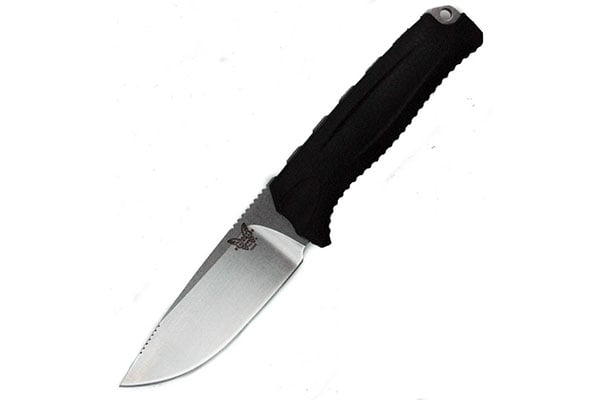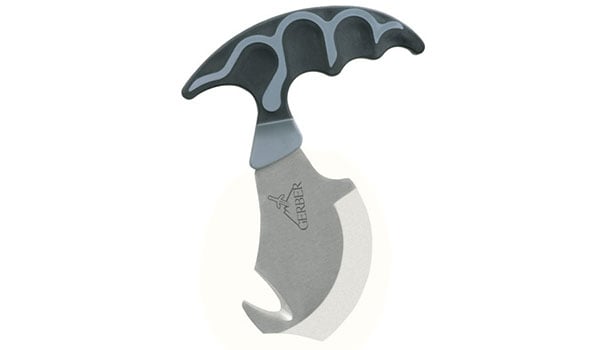
Last Updated on
By David Link
Field dressing a deer is a rite of passage for every deer hunter, but it can be an intimidating process for the uninitiated. While you can only really learn how to field dress a deer once you’re in the field, you can do some prep work like selecting a quality knife and having a general idea of the process. This article is meant to start the conversation on field dressing that in-person experience will finish.
Success! But The Work Has Just Begun
You’ve managed to shoot the buck that crossed in front of your stand, and after a short bit of tracking, you’ve found the animal downed next to a creek bed. A rush of success is sure to wash over you at the moment you see the animal down, but after all the scouting and shivering in the deer stand, the hard work has really just begun. Now comes the time to field dress the deer and pack it out for processing. As you approach the deer, do it with caution until you know the animal has for sure passed on. It is always wise to keep your gun ready in case the animal jumps up unexpectedly. A wounded buck can be very dangerous if he is flailing his antlers around in panic. Prod the downed animal with the muzzle of your rifle or shotgun to ensure he won’t jump up unexpectedly or surprise you. Once satisfied, it’s time to break out your knife and start the field dressing process.

Initial Incisions
First off, break out your rubber gloves for the field dressing process. Whenever you clean any wild game, not just deer, you should wear gloves throughout the whole process. Before you get underway, store your hunting pack and firearm off to the side in a safe spot. Since you’ll have to adjust the deer a few times throughout the process, you don’t want your gear getting in the way. Don’t forget to unload your gun. Even if you have a second permit, it’s time to just focus on the deer you’ve shot for a while. Once the meat is comfortably in your freezer, you can go back to filling the second permit.

Once you’re ready to go, turn the deer over on its back and spread the hind legs apart. For these first few incisions, you can even stand on the deer’s hind legs near the hooves to keep them from hitting you or closing up as you cut. The first cut you should make is an inch or two above the anus of the deer. Make this cut very gingerly, and remember that the intestines are not too far below this initial incision point. The number one thing you want to avoid in this process is rupturing the intestines with your knife, and it is always best keep this first cut shallow. Once you’ve got a starting point established, turn the blade up your knife up. This strategy will aid in keeping your cuts shallow. Use the tip of the knife to work your way up to the rib cage, and be sure to stay centered down the middle of the animal. You can even use your fingers to guide the knife up as you cut, just be careful and take your time. If you accidentally puncture a glove, stop and replace it with a new one. It’s always wise to carry a couple back up gloves just in case.

Once you reach the bottom of the rib cage, stop with this initial incision. You should be able to open the stomach and lower intestine cavity and spread it apart. Now pause for a second and turn the deer on it’s side to let excess blood and some of the intestines and organs run out. You want to make a concerted effort to remove excess pooling blood for two reasons. First off, the blood is hot and will speed any potential spoiling of the meat, and keeping excess pools off the animal will slow this process. Secondly, you want to drain the blood from other portions of the animal as well. This will keep other areas of meat from spoiling as the arteries drain.
Organ Removal
Now that you’ve let some excess blood run out, it’s time to cut away the intestines and other lower organs. Starting at the rib cage border, slowly and carefully begin removing organs with your knife. As we mentioned earlier, avoid rupturing the intestines or bladder during this process. You may need to drag and adjust the deer as you go through this process. Once all those organs are removed, turn the deer on its side again to purge the cavity of excess blood. Now move on to the chest cavity. Look for the membrane that holds the lungs and heart in that is attached to portions of the rib cage. Cut this away and then move your knife deeper to cut out the esophagus out as well. These actions should make the heart and lungs easier to remove as well, but you may have to use your knife to finish lung and heart removal.

Once the lungs, heart, and esophagus are out, you’re on the home stretch. The last bit of field dressing left to do is to split the pelvis and remove the rest of the digestive tract. Right around where you made the initial incision is where the pelvis will be, and you should try to split it down the center. This can be accomplished by turning your knife blade into the pelvis and hammering until the pelvis severs, or a hand ax can make this process easier. Once the pelvis is split, cut out the rest of the digestive tract, and the animal is officially field dressed.
Skinning And Processing
Now all that remains is to get the animal to the check station and then to your garage for skinning and initial processing. The best way to position the animal for skinning is with its feet in the air and head a foot or so off the ground. Any number of bars and other rigs are available to aid in hanging the deer this way, and attaching this rig to a pulley will save your back from unnecessary lifting. Once the deer is hung, put on a fresh pair of gloves and make cuts all around the hind legs just above the ankles (or below the ankles in this case) since the deer is upside down. Once you’ve got these cuts going, you can slide your knife between the fat and the hide and it will cut away relatively easy. Continue to work down until you’ve skinned and pulled the hide down past the shoulders. Now cut away the head and neck with a saw and dispose of the head.

Once the hide is completely off, cut out the back straps portion of meat and set aside. This is really the top quality portion of meat, and it makes great steaks. Now quarter the front two legs and remove the hooves, and place it in the freezer. Now quarter the hind legs which will release the body and rib section of meat. Once the body section is stored, finally remove the now separated hind legs from the hanging rig. All that is left to do is bone the meat once it’s cooled down, and then process it yourself or take it to the local plant. In no time you’ll be enjoying the fruits of your labor for a nice meal.




Leave a Reply